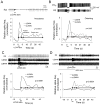A neuronal network switch for approach/avoidance toggled by appetitive state
- PMID: 22197246
- PMCID: PMC3267890
- DOI: 10.1016/j.cub.2011.10.055
A neuronal network switch for approach/avoidance toggled by appetitive state
Abstract
Concrete examples of computation and implementation of cost/benefit decisions at the level of neuronal circuits are largely lacking. Such decisions are based on appetitive state, which is the integration of sensation, internal state, and memory. Value-based decisions are accessible in neuronal circuitry of simple systems. In one such system, the predatory sea slug Pleurobranchaea, appetite is readily quantified in behavior and related to approach/avoidance decision. Moreover, motor aspects of feeding and turning can be observed as fictive motor output in the isolated central nervous system (CNS). Here we found that the excitation state of the feeding motor network both manifested appetitive state and controlled expression of orienting versus avoidance. In isolated CNSs, spontaneous feeding network activity varied proportionally to donor feeding thresholds. CNSs from low- and high-feeding-threshold donors expressed fictive orienting or avoidance, respectively, in response to brief stimulation of sensory nerves. Artificially exciting the feeding network converted fictive avoidance to orienting. Thus, the feeding network embodied appetitive state and toggled approach/avoidance decision by configuring response symmetry of the premotor turn network. A resulting model suggests a basic cost/benefit decision module from which to consider evolutionary elaboration of the circuitry to serve more intricate valuation processes in complex animals.
Copyright © 2012 Elsevier Ltd. All rights reserved.
Figures




Similar articles
-
Implementing Goal-Directed Foraging Decisions of a Simpler Nervous System in Simulation.eNeuro. 2018 Mar 1;5(1):ENEURO.0400-17.2018. doi: 10.1523/ENEURO.0400-17.2018. eCollection 2018 Jan-Feb. eNeuro. 2018. PMID: 29503862 Free PMC article.
-
The Sea Slug, Pleurobranchaea californica: A Signpost Species in the Evolution of Complex Nervous Systems and Behavior.Integr Comp Biol. 2015 Dec;55(6):1058-69. doi: 10.1093/icb/icv081. Epub 2015 Jul 10. Integr Comp Biol. 2015. PMID: 26163678 Free PMC article. Review.
-
Neuromodulatory control of a goal-directed decision.PLoS One. 2014 Jul 21;9(7):e102240. doi: 10.1371/journal.pone.0102240. eCollection 2014. PLoS One. 2014. PMID: 25048964 Free PMC article.
-
Orienting and avoidance turning are precisely computed by the predatory sea-slug Pleurobranchaea californica McFarland.J Exp Biol. 2007 Feb;210(Pt 4):561-9. doi: 10.1242/jeb.02697. J Exp Biol. 2007. PMID: 17267641
-
Does the lateral hypothalamus govern the transition between appetitive and consummatory feeding?Neuropharmacology. 2025 Sep 1;275:110438. doi: 10.1016/j.neuropharm.2025.110438. Epub 2025 Apr 5. Neuropharmacology. 2025. PMID: 40194590 Review.
Cited by
-
A core circuit module for cost/benefit decision.Front Neurosci. 2012 Aug 31;6:123. doi: 10.3389/fnins.2012.00123. eCollection 2012. Front Neurosci. 2012. PMID: 22969700 Free PMC article.
-
Decision Making and Behavioral Choice during Predator Avoidance.Front Neurosci. 2012 Aug 28;6:125. doi: 10.3389/fnins.2012.00125. eCollection 2012. Front Neurosci. 2012. PMID: 22973187 Free PMC article.
-
Implementing Goal-Directed Foraging Decisions of a Simpler Nervous System in Simulation.eNeuro. 2018 Mar 1;5(1):ENEURO.0400-17.2018. doi: 10.1523/ENEURO.0400-17.2018. eCollection 2018 Jan-Feb. eNeuro. 2018. PMID: 29503862 Free PMC article.
-
The Sea Slug, Pleurobranchaea californica: A Signpost Species in the Evolution of Complex Nervous Systems and Behavior.Integr Comp Biol. 2015 Dec;55(6):1058-69. doi: 10.1093/icb/icv081. Epub 2015 Jul 10. Integr Comp Biol. 2015. PMID: 26163678 Free PMC article. Review.
-
Coordination of Locomotion by Serotonergic Neurons in the Predatory Gastropod Pleurobranchaea californica.J Neurosci. 2023 May 17;43(20):3647-3657. doi: 10.1523/JNEUROSCI.1386-22.2023. Epub 2023 Apr 24. J Neurosci. 2023. PMID: 37094932 Free PMC article.
References
-
- Kristan R, Gillette R. Behavioral choice. In: North G, Greenspan RJ, editors. Invertebrate Neurobiology. New York: Cold Spring Harbor Laboratory Press; 2007. pp. 533–553.
-
- Yafremava LS, Anthony CW, Lane L, Campbell JK, Gillette R. Orienting and avoidance turning are precisely computed by the predatory sea-slug Pleurobranchaea californica Mcfarland. J Exp Biol. 2007;210:561–569. - PubMed
-
- Gillette R, Saeki M, Huang RC. Defense mechanisms in notaspidean snails: Acid humor and evasiveness. J Exp Biol. 1991;156:333–347.
Publication types
MeSH terms
Grants and funding
LinkOut - more resources
Full Text Sources
Research Materials

